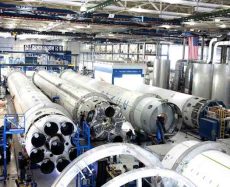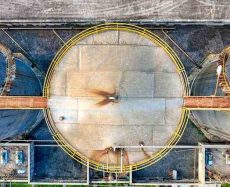- admin
- May 5, 2022
An Overview About Field Erected Tanks
Various projects may have different storage tank needs, with some requiring a field erected tank and others requiring a different type of tank. There are a few things to consider if you feel your project requires the usage of a field-erected storage tank. Take a peek at the gallery below for an overview of field-erected tanks.
The size of field erected tanks
To those who are acquainted with storage tanks, this may seem self-evident. This isn’t always the case, though. A storage tank is likely to be a modest component of the total scope whether you’re an engineering firm or a project manager working for a General Contractor on a large project. The distinction between a very large and a large tank may not be noticeable in this case. An extremely large tank may hold over 45,000 gallons and has a diameter of more than 15 feet. These are only some fundamental minimum criteria; welded steel tanks may be designed and manufactured in practically any size, from small to massive.
Customization of field erected tanks
Field built tanks are so termed because they are so huge that they must be put together in a shop and then transported to the project site. Shop-made storage tanks, on the other hand, are constructed, primed, blasted, and erected entirely within a shop. After that, the tanks are brought to the project location, where they are completed or constructed.
Tanks built in a store are sometimes positioned outside and sometimes within the structure. Shop-built storage tanks, like field erected tanks, are composed of stainless steel or carbon steel and must adhere to a variety of tank laws and standards. Whether a shop-built or field erected storage tank is required depends on code and pressure requirements, as well as the tank’s size and capacity. At times, the location might have a significant influence.
Stock is not kept for tanks that have been put in the field. Tanks are not ‘carried’ by a contractor who erects them on the field. Each tank is built to do what it’s meant to do, how it’s supposed to run, what it’s supposed to hold, what forces it’s supposed to withstand, and where it’s intended to sit, among other things. Following the design, the storage tank is constructed one steel plate piece at a time, in accordance with those specifications. The fence plate pieces, nozzles, tank shell, and other materials are put onto a flatbed trailer and transported to the project location.
Starting with the foundation, the storage tank is built there. While there are certain common parameters for basic tanks like firewater tanks, municipal water tanks, and other types of storage tanks, these specifications serve as a starting point for a final design that matches the precise needs of each owner or customer.
The material composition of field erected tanks
Massive steel constructions, field erected tanks can withstand extremes in weather, temperature, harsh products, time, and a range of other factors. Depending on the tank’s function, a field erected tank might be made of duplex, stainless steel, or carbon steel. Not all tank contractors can handle duplex and stainless steel since such complex materials need careful handling and storage techniques.
From bulk liquid storage to municipal water storage, carbon steel tanks are utilized in a range of applications. Tanks made of duplex and stainless steel are used in the food and beverage industry, the power sector to store demineralized water, the chemical industry to store caustic chemicals, and other applications where the tank contents must be corrosion resistant.
Category
- Above Ground Fuel Tanks
- Above Ground Gas Storage Tank
- Above Ground Storage Tanks
- Above Ground Water Storage Tanks
- Agricultural Tanks
- Chemical storage Tanks
- Diesel Fuel Storage Tanks
- Diesel Storage Tanks
- Exernal FloatingRoof Tanks
- Farm Water Tank
- Fiberglass Oil Tanks
- Fiberglass Septic Tanks
- Fiberglass Underground Fuel Storage Tanks
- Field Erected Tanks
- Floating Roof Tank
- Fuel tank
- Industrial Chemical Storage Tanks
- Industrial Gas Tanks
- Industrial Plastic Tanks
- Industrial Storage Tanks
- Industrial Tank heating pads
- industrial tanks
- Natural gas
- Natural gas vs Propane
- oil storage tank
- Oil Storage Tanks
- Peracitic Acid
- Petroleum Tanks
- Residential gasoline storage tanks
- Residential Water Storage Tanks
- Sodium Hydroxide Storage Requirements
- Sodium Hypochlorite Storage Tanks
- storage tank failure prevention
- Storage Tanks
- Sulfuric Acid Tanks
- Uncategorized
- UnderGround Storage Tanks
- Water Storage Tanks

 Tank Size Calculator
Tank Size Calculator






